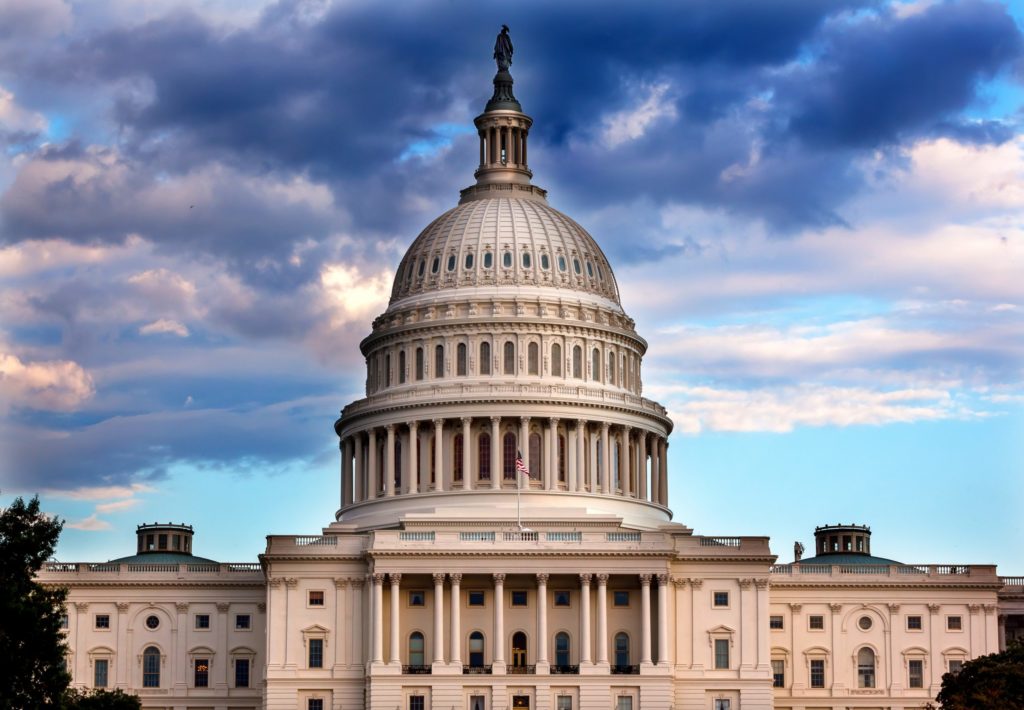George Kaufman: 57 years of banking changes and ideas
57 Years of Banking Changes and Ideas
Remarks at the Dinner in Honor of Professor George Kaufman’s Retirement
Nov. 17, 2016
It is a great pleasure to be able to add these reflections to our proceedings in honor of George Kaufman upon his retirement.
We begin a quick trip through American financial history during George’s career with this quotation:
The past 100 years of American banking have been characterized by periods of remarkably rapid change.
This observation is from 56 years ago, from the 1960 Report of the Federal Deposit Insurance Corp. It was true then, and is true now.
The year before that, in 1959, the young George Kaufman walked into the Federal Reserve Bank of Chicago to begin his career. Needless to say, the “periods of remarkably rapid change” in American banking continued as his career progressed.
In 1960, there were in the United States: 13,126 commercial banks, 5,320 savings and loans, and 516 mutual savings banks. Those institutional differences then seemed much more important than they do now—these groups all had their own trade associations, for example. Together they made in 1960 a total of 18,962 depository institutions. As we all know, this number is now just over 6,000 and continues to fall. But that is still a lot of banks!
Two questions which would occur to the participants in this dinner, although doubtless never to ordinary citizens, are: When did the United States have its maximum number of banks? And how many banks was that? (I will not call on Charlie Calomiris here, because he might know.[1]) The answers are the year 1921 and it was 31,076 commercial banks. In addition, there were more than 8,000 savings and loans.
Coming back to 1960, the total assets of the aggregate commercial banking system were $256 billion—about one-tenth of the assets of today’s JPMorgan-Chase. That was 48 percent of the 1960 gross domestic product of $535 billion. The total assets of the prestigious 1959 Citibank—which wasn’t “Citibank” in those days, but the First National City Bank of New York—were $8.3 billion, or about 0.3 percent of the current JPMorgan.
Closer to home, I found the 1958 numbers for the Continental Illinois National Bank and Trust Co. of Chicago. That then-very-conservative balance sheet had total assets of $2.9 billion—today’s size of a large community bank.
A truly striking statistic is that in 1960, non-interest-bearing demand deposits at national banks were equal to about 60 percent of their total banking assets—something unimaginable now.
Also in 1960, there were still outstanding $55 million of national bank notes—currency issued by individual banks. The Federal Reserve had on its balance sheet $279 million of silver certificates. These were the paper money, as you will recall, which the U.S. Treasury promised to redeem for a silver dollar—something quite different from the fiat currency we have come to know so well. Well, perhaps not so different after all, because in the first decade of George’s career, the government decided it would renege on its commitment to pay in silver.
A roomful of economists will not have failed to notice that in all the numbers I have cited, I have used nominal dollars. There are two reasons for this:
- Rhetorical fun
- To remind us that George’s long career has involved unceasing, endemic inflation.
Indeed, this has progressed to the point where the Federal Reserve has formally committed itself to perpetual inflation. Such a development in Federal Reserve ideology would have greatly shocked and surprised the chairman of the Federal Reserve for the first decade of George’s career, William McChesney Martin, who called inflation “a thief in the night.”
Speaking of the Fed, George’s first career decade also included the Credit Crunch of 1966 and his second began with the Credit Crunch of 1969. Those were the days of the notorious “Reg Q,” under which the Fed set maximum interest rates on deposits and, in so doing, caused the painful crunches.
Did the Fed know what the right interest rate was in 1966 or 1969?
Nope.
Does the Fed know what the right interest rate is now?
Nope.
We move into the 1970s. They started with a world historical event, at least as far as finance goes: the default by the United States on its Bretton Woods commitment to redeem dollars held by foreign governments for gold. Announcing this decision in August 1971, President Richard Nixon blamed the problem on “international money speculators.” The real proximate cause was French President Charles de Gaulle’s financial good sense of preferring gold to overvalued dollars.
In the wake of the end of Bretton Woods, the 1970s brought us the worldwide system of fiat currencies and floating exchange rates. This system has experienced a remarkable series of debt and currency crises in the ensuing years.
Speaking of debt crises, the default by Puerto Rico was discussed this afternoon. On Page 15 of George’s 38-page curriculum vitae, we find that in 1975, George was involved in the government finances of Puerto Rico and was a consultant to Puerto Rico’s Government Development Bank. This bank is now utterly insolvent, as is the whole government of Puerto Rico. However, I do not think it would be fair to attribute this to George’s 1975 advice!
In 1976, George was working in the U.S. Treasury Department. Here were the 10 largest banks in the United States, in order, in 1976:
- Bank of America (that is, the one is San Francisco)
- Citibank
- Chase Manhattan
- Manufacturers Hanover
- Morgan Guaranty
- Continental Illinois
- Chemical Bank
- Bankers Trust
- First National Bank of Chicago
- Security Pacific
Of these 10, only two still exist as independent companies. They are Chemical Bank, which became JPMorgan-Chase, and Citibank, which has in the meantime been bailed out three times.
In the next decade, in 1981, George became the John F. Smith Professor of Finance and Economics here at Loyola University of Chicago, the chair he has held ever since, also serving as the director of the Center for Financial and Policy Studies.
Soon after George got his chair, the financial disasters of the 1980s came raining down. I assert, however, that this is correlation, not causation.
On a Friday in August 1982, then-Fed Chairman Paul Volcker called his counterpart at the Bank of Japan and announced that “The American banking system might not last until Monday!” Over the years 1982-1992, the notable total of 2,808 U.S. financial institutions failed. That is an average of 255 failures per year over those 11 years, or five failures a week. As many of us remember, the decade included the crisis of huge defaults on LDC—or “less developed country,” as we then said—debts; the collapse of the savings and loan industry; the bursting of the oil price bubble, which among other things, took down every big bank in Texas; the collapse of a bubble in farmland, which broke the Farm Credit System; and finally, a massive commercial real estate bust.
These 1980s disasters, which George studied and wrote about with much insight, call to mind James Grant’s vivid comment about the time: “Progress is cumulative in science and engineering but cyclical in finance. … In technology, banking has almost never looked back, [but] this progress has paid scant dividends in judgment. Surrounded by computer terminals, bankers in the 1980s committed some of the greatest howlers in financial history.”
The 1980s included, of course, the 1984 collapse of Continental Illinois Bank. Defending the ensuing bailout, then-Comptroller of the Currency Todd Conover introduced the memorable term “too big to fail.” The problem of “too big to fail” became an important theme in George’s work.
In the midst of these 1980s financial debacles, in 1986, George led the creation of the Shadow Financial Regulatory Committee. In its operation through 2015, the committee published 362 mostly trenchant and provocative policy statements. No. 362 was still dealing with “too big to fail.”
For the year 1987, George published a summary of this “dramatic year in U.S. banking and finance,” which included these observations: that “rates on long-term Treasury bonds stood at 9 ½%”; that “some 185 commercial banks failed during the year”; that “the drain on the Federal Savings and Loan Insurance Corporation was so great that the corporation ran out of reserves and had to be recapitalized by Congress”; and that “Alan Greenspan replaced Paul Volcker as chairman of the Federal Reserve,” while “M. Danny Wall [became] chairman of the Federal Home Loan Bank Board.”
Remember the Federal Home Loan Bank Board? Those of us here may, but hardly anybody else does. For Danny Wall, being made head of it in 1987 was like being made captain of the Titanic after it had already hit the iceberg. In contrast, Alan Greenspan rose to worldwide stardom and became “The Maestro”—until he wasn’t.
In the 1990s, George and the Shadow Committee were very influential in shaping FDICIA—the Federal Deposit Insurance Corporation Improvement Act of 1991, which put into statute the theory of prompt corrective action. The decade later brought a series of international financial crises, starting with the frantic bailout of Mexico in 1994.
In the next decade, the fifth of George’s career, came—as we all know too well—the massive housing and housing-finance bubble, bust and shrivel of the 2000s. Reflecting on prompt corrective action in light of those experiences, my conclusion is that it’s a pretty good theory, but financial exuberance makes it hard to practice.
The exuberance of the 2000s was defended as rational by many ex ante, then denounced as irrational ex post. In the aftermath of the 2007-09 crisis, I chaired panel of which George was a member. He gave this wonderful concluding comment:
Everybody knows Santayana’s saying that those who fail to study the past are condemned to repeat it. In finance, those who do study the past are condemned to recognize the patterns they see developing, and then repeat them anyway!
Now here we are, near the end of 2016. I believe we are probably closer to the next crisis than to the last one. It seems to me we need a Shadow Financial Regulatory Committee Roman Numeral II to get to work on it.
Ladies and Gentlemen:
Let us raise our glasses to George Kaufman and 57 years of achievement, acute insights, scholarly contributions, policy guidance and professional leadership, all accompanied by a lively wit.
To George!
[1] The next morning, Charlie told me that he did know
Image by Loyola University Chicago









